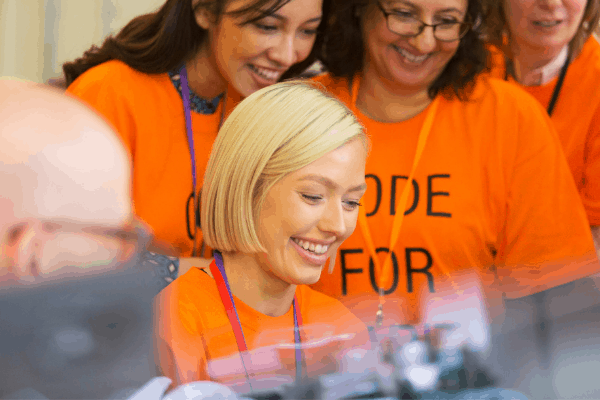Shopping Cart
The ultimate fundraising ideas for your group, non-profit organization, church, school, team, or event that are unique, easy, and enjoyable. Check out our Step-by-Step Fundraising Guide.

Welcome to the world of fundraising! There’s a lot of great information here for you… we’ve been working for years with fundraising organizations of all kinds. Cupper’s Coffee & Tea has helped our fundraising partners raise thousands of dollars. We have a lot of experience, and we’re ready to share it all with you.
Fundraising has become an important part of our communities. Many organizations use fundraising as part of their on-going funding strategies. Some groups that our team of experts have helped include:
You name it, somebody’s raising funds for it!
We also understand that charities and non-profits have been some of the hardest hit by both COVID-19 and the uncertainty of the current world situations. We want you to succeed, and we have fundraising ideas that work. The Cupper’s fundraising team has developed a guide to help you along the way.
Are you feeling overwhelmed by fundraising obligations? Not sure you can achieve what you want to achieve for your group or non-profit? It may be easier and more fun than you think. Fundraising can be beneficial and fun in more ways than just the “funds” part.

Putting together a successful fundraising campaign involves planning. You’ll be glad you took a few minutes to review your plans. We have created this guide to help you build a fundraiser for your organization from the ground up.

We find that successful fundraising campaigns have one major factor in common. They have a strong leader.
A strong leader needs to commit for the entire length of the campaign. They also need strong decision making skills and accept the responsibility for the campaign. Finally, they should have experience organizing a team to achieve a goal.
Your team should be passionate about your cause and your goals. Supporter engagement is dependent on the involvement of your team. A strong leader will organize a team based on their strengths and experience.
Do you have members with sales experience or business connections? Send them to seek out donations from businesses or cold-call for donations. Does someone have a financial background? Assign them to manage incoming donations. Does a volunteer have a marketing background? They can be your promotion and advertising lead.

There is no wrong type of fundraising. Cupper’s has worked with a variety of organizations with many different goals. It is important to be strategic in your choice to best support the needs of your group or organization.
Fundraising can be as simple as seeking out cash donations. In addition, it can cover a range of incentivized sales or events, like cookie sales or charity runs.
Here are some detailed breakdowns of popular fundraising methods to take into consideration.

Incentivized fundraisers involve selling a product to earn fundraising profits. These work either through catalogue sales, or customized products.


Secondly, an auction is a public sale of goods. It can be either a live or silent auction. A live auction involves an auctioneer whose role is to call and respond to bids made on items. These are successful when an event has sold well. A good auctioneer ensures participants enjoy bidding against each other. A silent auction has items for public display and patrons write down their bids. The silent auction usually has a scheduled end time when bids are closed. At the end of both auction types, items go to the highest bidder. Always check your local rules and regulations to ensure any auction held legally complies.

If you are offering a car wash or mowing lawns you are doing a service fundraiser. This method involves volunteers offering up a skill or service for fundraising dollars. This is a cost-effective way to raise funds but uses a lot of volunteer time. Materials should be minimal, while the labour is donated. It’s important to have a low-cost service option that creates a lot of traffic. Don’t ask for too much per transaction, but do allow for tips and donations. Volunteer engagement and strong promotional material is the name of the game!

Donation collecting is the most difficult form of fundraising. A large team of energetic volunteers is important. They should be comfortable with face to face meetings and with hearing “no”. They need to be willing to go door to door and ask for donations. There are also options like direct mail, text-to-donate, or online options.



This is the “why” stage of the goal setting process. In the planning stages of your fundraiser it is important to check in with your vision and mission. Make sure that the goals you are setting align with the principles of your organization. Confirm that this fundraiser will have a positive impact on its beneficiaries.
It’s not only important to have relevant goals, but you also need to communicate those to the donors. This should happen before, during, and after the fundraiser. This can be as simple as a follow-up email, or social media posts to the general public, or as elaborate as a reception or gala night.
Set a clear start date and communicate that to your supporters. Then set a deadline for when you want to wrap up your fund raiser. This will help your team track its progress and stay motivated. Time-line setting is important even for long term fundraising. A fundraising project with no end date feels like a burden to your volunteers and supporters.

Love it or hate it, social media allows for easy access to large audiences if used well. First step is to make sure to use the right platform… you need to learn what applications are being used most by your followers. The best way to find the right marketing tools for your fundraiser is to know your target audience.



"Working with Cupper's was an amazing experience, they listened to our needs and created a thoughtful blend keeping our clients in mind!" Parkinson Association of Alberta
Shop our exceptionally roasted coffee beans online.

Ethically Sourced and
Meticulously Roasted Coffee Beans
Phone: 403 380 4555
Regular Store Hours:
Mon – Fri: 9:00 am – 5:30 pm
Sat: 9:00 am – 5:00 pm
For Pick-ups:
Mon – Sat: 11:00 am – close
1502c 3rd Avenue South,
Lethbridge, AB T1J 0K8